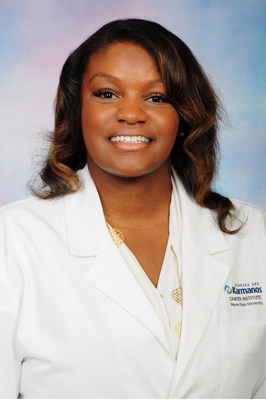The Barbara Ann Karmanos Cancer Institute, along with cancer centers and other organizations across the nation, recognizes July as Sarcoma Awareness Month.
|
DETROIT, July 20, 2020 /PRNewswire/ -- The Barbara Ann Karmanos Cancer Institute, along with cancer centers and other organizations across the nation, recognizes July as Sarcoma Awareness Month. Often called the "forgotten cancer," sarcoma refers to more than 70 subtypes of cancer that affect the body's connective tissue. Sarcomas occur when cells grow abnormally in the tissues that form bone, muscle, fat, tendons and cartilage. Because they vary between subtypes, symptoms can range from swelling to fatigue or bone breaks and persistent pain. A complete list of symptoms and risk factors can be found below. Soft tissue sarcomas usually occur in younger people — those in their 20s and 30s — while bone sarcomas often occur in children when they are going through growth spurts. "Sarcomas are rare. There are less than 13,000 soft tissue sarcoma diagnoses per year, so it affects a smaller population than some other cancers, such as breast cancer," explained Alysia Kemp, M.D., leader of the Sarcoma Multidisciplinary Team at the Barbara Ann Karmanos Cancer Institute. "Because it's rare, less than one percent of all cancer diagnoses, there isn't as much awareness and research takes longer." Sarcoma Treatment at Karmanos Cancer Institute "Even though a patient might see one person at an appointment, they have the care of a whole team. The process is streamlined for the patient so they don't have unnecessary appointments but there are always about five to 10 people involved in the patient's care, working behind the scenes," said Dr. Kemp. Patients who benefit most from a consultation with Sarcoma Multidisciplinary Team include:
Sarcoma Symptoms and Risk Factors Soft tissue sarcomas often cause the following symptoms:
Bone sarcomas often cause the following symptoms:
Most lifestyle factors, such as diet and daily habits do not affect the risk of developing sarcoma. However, the following factors may lead to increased risk:
There is no preventative test for sarcoma. If patients show symptoms, they should contact a specialized physician to schedule a physical exam. Tests used to determine whether sarcoma is present may include x-rays, MRI, ultrasound and biopsy. Those interested in learning more about sarcoma may attend a webinar led by Dr. Kemp on Tuesday, July 28 at 5 p.m. EST. The webinar, titled Sarcoma: Don't Ignore the Lumps, is free and open to the public. To learn more and register, visit karmanos.org/sarcomawebinar. About the Barbara Ann Karmanos Cancer Institute
SOURCE Karmanos Cancer Institute |






